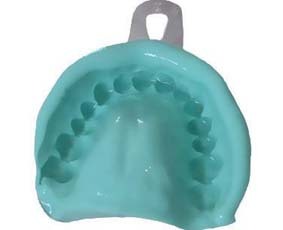
A self-administered anonymous questionnaire was distributed to the participants. Ethical approval for the beginning of the study was obtained via Institutional Review Committee, Ibn Sina National College for Medical studies, Jeddah. Material and methods: A questionnaire based survey was conducted among the dental practitioners of Makkah region of Saudi Arabia. – They work around the weaknesses of the material and are able to produce excellent results.The aim of this survey was to integrate impression techniques evolved all over the years for fixed partial dentures and to know the techniques and materials which are used in the present day by the practitioners. – Few dentists use reversible hydrocolloid, but those who do, love it. – With the various advantages and disadvantages of reversible hydrocolloid material, one would expect dentistry to have a love–hate relationship with this material. Popularity of Reversible Hydrocolloid ( Agar ) – Another shortcoming of these materials is their poor tear strength compared with non aqueous elastomeric impression materials. – On the other hand, these materials require special equipment for heating, cooling, and use. – In fact, some dentists wet the teeth with water just before taking the impression. – Therefore, reversible hydrocolloids are very useful for taking impressions when the margins of a crown preparation are subgingival or not easily kept dry. – Reversible hydrocolloid works well in a wet environment. Advantages and Disadvantages of Reversible Hydrocolloid ( Agar ) The characteristic of melting and gelling at different temperatures is called hysteresis. On the other hand, it gels at a much cooler temperature, the mouth temperature. It melts at a much higher temperature that of boiling water. It is important to note that reversible hydrocolloid does not melt at the same temperature at which it gels. – Hysteresis is unlike the common phase changes of water, which melts and freezes (or boils and condenses) at the same temperature.

Circulating cold water through tubing and a special tray facilitates cooling. At mouth temperature, the material gels and returns to its elastic state. Tempering lowers the temperature to a point at which the oral tissues are able to tolerate the impression material. (C) Several minutes before it is to be used for an impression, the reversible hydrocolloid is placed in a 110☏ (45☌) water bath. Material can be stored for as long as several days. (B) In the second compartment, the material is stored in a 150☏ (65☌) water bath until needed. – This equipment has three compartments: (A) In the first compartment, the reversible hydrocolloid is boiled to change the rubbery material (the gel) into a viscous liquid (the sol). – Special equipment, called a hydrocolloid conditioner is required. – This can be done at the beginning of the day or the week. – Reversible hydrocolloid ( Agar ) must be prepared for use before taking the impression. – Reversible hydrocolloid itself is very inexpensive and results in a very accurate impression. – The special equipment that is required to use reversible hydrocolloid limits the popularity of this excellent material. – In addition, special impression trays that circulate cooling water are needed.

– Reversible hydrocolloid (Agar) requires special equipment to heat, store, and temper the materials. – The sulfate compound improves the hardness of the gypsum material that is poured into the impression. Other components of reversible hydrocolloid include colorants, flavors, mold inhibitors, and a sulfate compound.

Is also the material used in microbiology as a growth medium. – Reversible hydrocolloid is predominantly water with added agar (a carbohydrate polymer). – The sticks look and feel like a long, thin pencil eraser, except they feel wet because of their high water content. – Reversible hydrocolloid ( Agar ) is premixed by the manufacturer and supplied as a semisolid material in tubes and sticks.


 0 kommentar(er)
0 kommentar(er)
